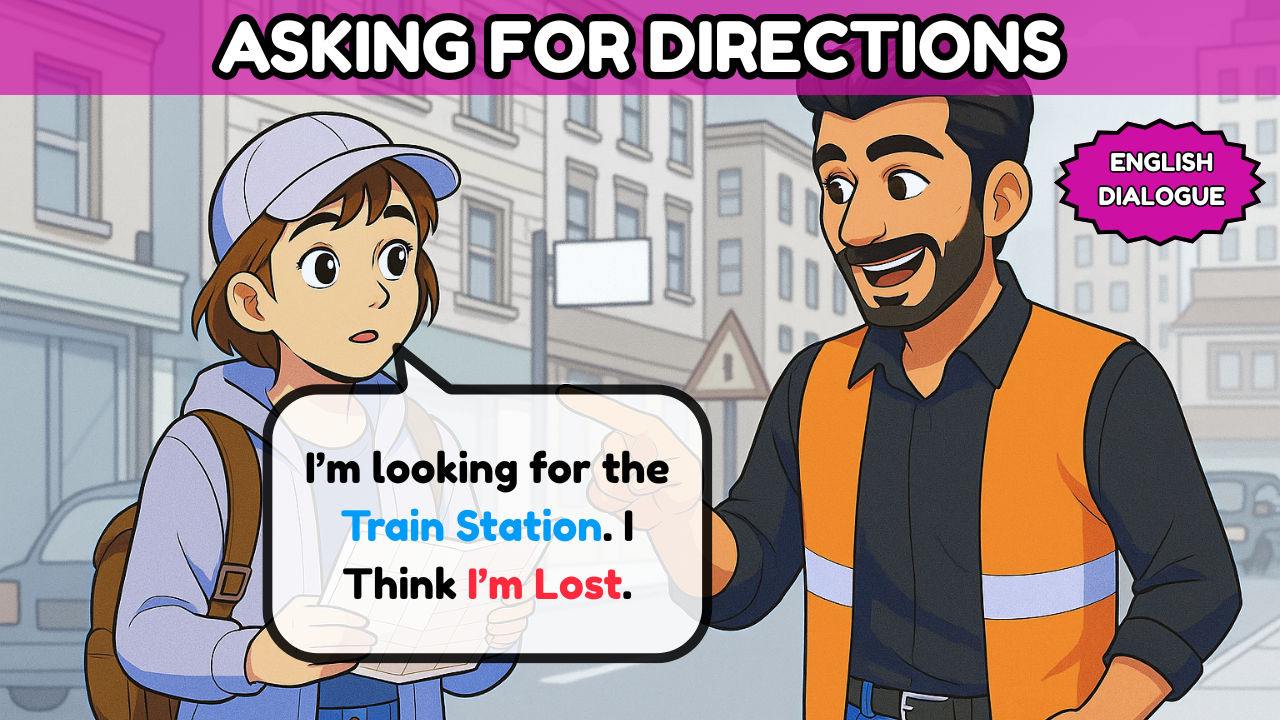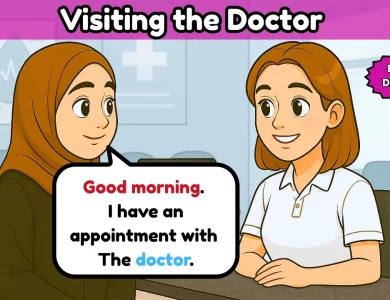Knowing how to ask for directions is one of the most essential skills in daily communication. Whether you’re traveling to a new city or just trying to find a store nearby, being able to ask politely and understand the answer makes life much easier. In this simple English dialogue conversation, we’ll explore how to ask for help, understand directions, and respond naturally in English.
This lesson is perfect for beginners who want to build confidence in real-life English. It’s also great for learners who are looking for daily English conversation practice for beginners — focusing on clear, slow, and practical expressions that can be used anywhere.
Situation: Lost in the City
Anna is visiting a new city for the first time. She wants to find the central park, but she feels a bit lost. As she walks down the street, she sees a friendly man standing near a bookstore. She decides to ask him for directions.
This short English dialogue shows how to start a polite conversation with a stranger, ask questions, and understand simple instructions in English.
Watch the Video.
🎥 Watch the full video below to listen and repeat the conversation:
Conversation Summary.
In this simple English dialogue conversation, Anna politely asks:
“Excuse me, can you tell me how to get to the central park?”
Tom, the local man, replies:
“Sure. Go straight for two blocks, then turn left at the traffic light. The park will be on your right.”
Anna thanks him and repeats the directions to make sure she understood correctly. This short, friendly exchange shows how small expressions can make communication easy and natural.
Common Expressions.
When you ask for directions, use polite phrases:
- Excuse me, can you help me?
- Can you tell me how to get to…?
- Where is the nearest bus stop?
- Go straight and turn left.
- It’s across from the post office.
These expressions are simple, natural, and used in real conversations every day.
Vocabulary Focus.
| Word | Meaning | Example |
|---|---|---|
| Directions | Information about how to get somewhere | I asked for directions to the museum. |
| Turn left / right | Move in that direction | Turn right after the café. |
| Go straight | Continue without turning | Go straight for 200 meters. |
| Across from | Opposite side | The park is across from the library. |
| Next to | Very close, beside | The hotel is next to the supermarket. |
Learning these words helps you describe locations clearly and understand answers faster.
Grammar and Speaking Tips.
When you ask questions, remember to use polite forms:
✅ “Can you tell me where the bank is?”
❌ Not: “Where bank?”
Also, listen carefully for direction words like straight, left, right, next to, across from, and behind.
These small details make a big difference in understanding instructions.
Pro Tip:
Repeat directions back to the person to confirm you understood:
“So, I go straight, then turn left at the lights, right?”
This makes your English sound confident and natural.
Practice Activity.
Try this short exercise:
1️⃣ Imagine you’re lost in your city. Write a short English dialogue of four lines asking someone for directions.
2️⃣ Use at least three of these expressions: Excuse me, go straight, turn left, across from, next to.
3️⃣ Read it aloud two or three times — this is excellent daily English conversation practice for beginners.
Final Thoughts.
This simple English dialogue conversation teaches more than just phrases — it builds confidence to speak in real situations. Every time you go out, practice asking for directions in your mind or with a friend. Soon, you’ll find yourself speaking fluently without fear.
👉 Watch more short English dialogues and daily English conversation lessons on our YouTube channel Minute English. Each video helps you improve step by step — listening, speaking, and understanding real English.

